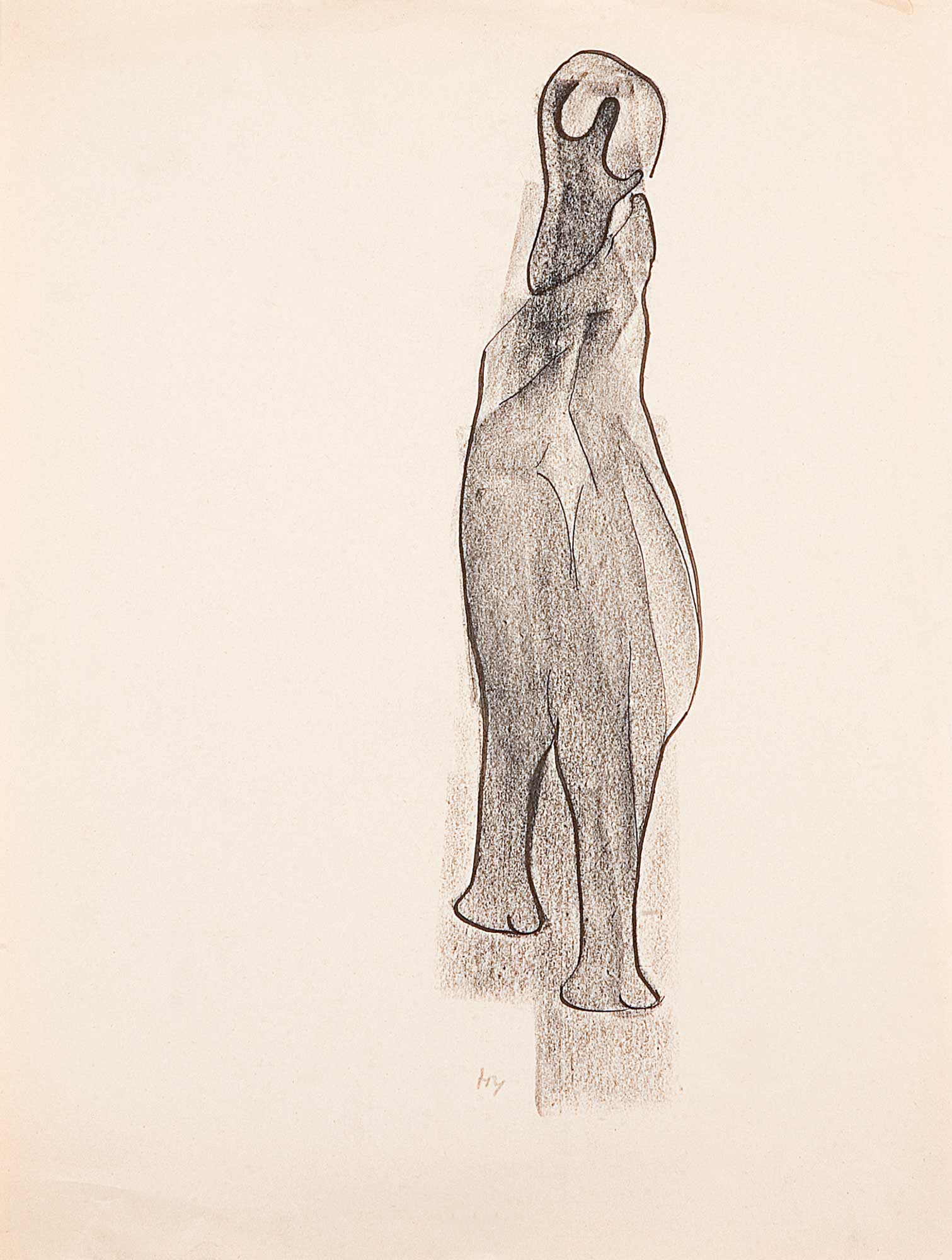APPARITIONS AND "PHANTOMISM"
GALLERY 305
An indefatigable experimenter and traveler, Michaux entered the world of painting thanks to the works of Paul Klee and Max Ernst, with whom he first came into contact in the mid–1920s. The writer’s tools, ink and paper, were his first resources in the pictorial adventure, but he soon developed techniques that are now regarded as characteristic of his work, such as tempera on a black background and also frottage. In his later period he worked in oil and acrylic. He also made singular use of watercolor and ink on many different types of paper. These techniques had the common feature of fluidity and a propensity for accidents and overflowing, both desirable for an artist who always sought the intervention of chance in his works as a way of collaborating with unknown forces. With an ascetic and systematic spirit, the same impulse prompted Michaux to try hallucinogenic substances in order to observe the behavior of the consciousness in experimental conditions. In this way, he brought the principles of his painting to the senses themselves. For Michaux, painting is that other side of which the artist draws an infinite map.
To use his own words, Michaux always painted “to surprise himself.” He never believed in predefined results, but rather sought to provoke indefinable events in his material, causing the emergence of ambiguous and unexpected figures, signs, and landscapes. In a celebrated statement on “the phenomenon of painting” in which he denied affiliation to any school or tendency, he admitted that the only movement he might be ascribed to would be fantomisme (‘phantomism’): an art of ghosts and apparitions. Undefined beings thus appear throughout all his work, with a special abundance of imaginary portraits. Focusing on this classic genre, this gallery contains a wide selection of works in which Michaux’s characters come out of the infinite depth of the sheet of paper to meet the artist and the viewer.

